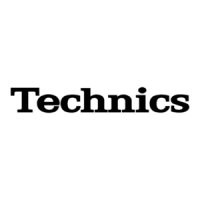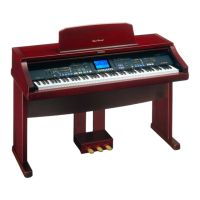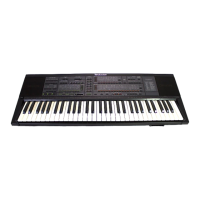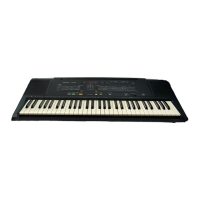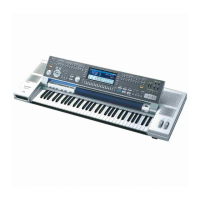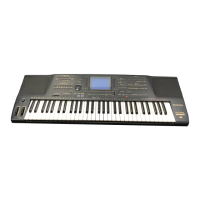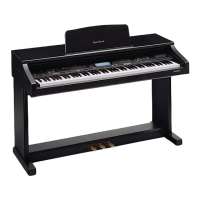
Do you have a question about the Technics SX-PR500 and is the answer not in the manual?
| Type | Digital Piano |
|---|---|
| Number of Keys | 88 |
| Sound Generation | PCM |
| Rhythms | 100 |
| Display | LCD |
| MIDI | Yes |
| Effects | Reverb, Chorus |
| Sequencer | 16-track |
| Connectivity | Headphones, Line Out |
| Keyboard Action | Weighted Hammer Action |
| Voices | 300 |
Essential safety guidelines for using the instrument, including electrical and environmental hazards.
Recommendations for proper placement and installation to ensure safe operation.
Instructions for cleaning, care, and when to seek professional servicing.
Select standard piano or various performance styles.
Create and store original rhythm patterns.
Choose preset automatic rhythm patterns.
Listen to programmed demonstration tunes.
Perform using piano sounds with accompaniment.
Select sounds and effects automatically.
Select from various instrument sounds.
Record and play back your performance.
Add various effects to enhance sounds.
View performance information and settings.
Store current panel settings for instant recall.
Initial setup and basic operation of the instrument.
Play pre-programmed songs to hear instrument capabilities.
Learn to play the instrument using piano sounds.
Explore and choose from various instrument sounds.
Select and play preset automatic rhythm patterns.
Manage tempo, intro, fill-in, and ending patterns.
Use chords to create automatic musical accompaniment.
Load and play songs from external disks.
Understand display information and adjust volume balance.
Learn to navigate menus and use control buttons.
Adjust the contrast of the instrument's display.
Select performance styles like piano or split keyboard.
Use RIGHT 1 and RIGHT 2 buttons to select sounds.
Choose sounds from various instrument groups.
Combine sounds or divide keyboard into sections.
Configure pedal functions and adjust string resonance.
Apply digital effects like chorus and reverb.
Adjust key pitch and create harmony with Techni-chord.
Choose desired rhythm patterns from the display.
Set up and use the metronome for practice.
Play rhythms with intro, fill-in, and ending patterns.
Generate automatic accompaniment by playing chords.
Perform with piano sounds and automatic accompaniment.
Instantly set up sounds and tempo for a song.
Select music styles for automatic accompaniment.
Arrange music styles with registration settings.
Store and recall panel settings for quick access.
Introduction to recording and editing performances.
Access and navigate the sequencer functions.
Record, name, and play back songs.
Quickly record and play back performances.
Record performances with timing and tempo control.
Playback recorded songs and manage tracks.
Enter notes and chords step-by-step for precise recording.
Erase or edit song portions and clear tracks.
Overview of creating custom rhythm patterns.
Access composer functions for recording.
Prepare rhythm patterns by copying and editing.
Create new rhythm patterns from scratch.
Record rhythm patterns with tempo and time signature.
Select composer modes for playback and arrangement.
Map chords to accompaniment patterns.
Learn about storing composer and sequencer data.
Load Technics files, SMF, and composer data.
Format floppy disks for data storage.
Save performance and panel settings to disk.
Delete specific files from the disk.
Adjust sound parameters like tone and effects.
Set attributes for each part: pan, reverb, sustain, tuning.
Adjust touch response and tuning of the instrument.
Customize key scaling and tuning for performance.
Specify how left-part sounds behave during playback.
Understand MIDI for digital communication.
Overview of MIDI operational functions.
Configure MIDI settings like channels and common messages.
Assign MIDI channels to instrument parts.
Set common MIDI parameters for all parts.
Enable or disable control messages for MIDI data.
Restore instrument settings to factory defaults.
View default settings applied when the instrument powers on.
Connect MIDI devices and the sustain pedal.
Step-by-step guide to assemble the Technics piano.
Provides remedies for common operational issues and malfunctions.
Lists error codes and their corresponding explanations and solutions.
Details the technical features, dimensions, and power requirements.
